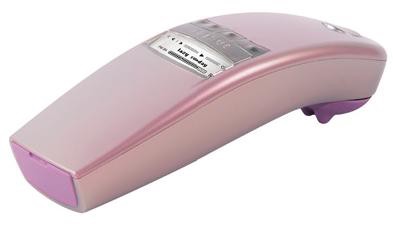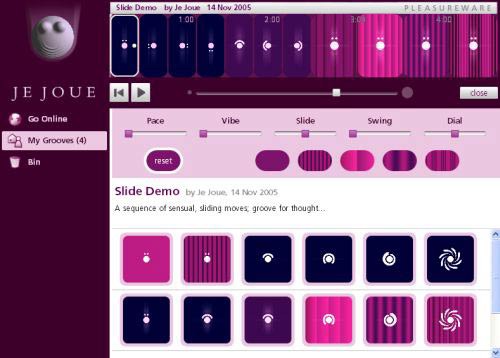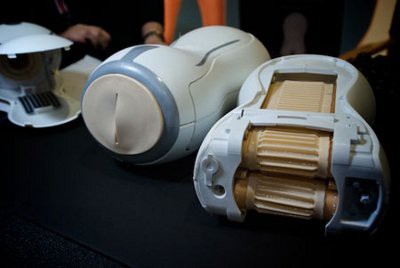I Program My Home Computer, Beam Myself into an Orgasm
Originally posted on Medium's Boinkology 101 Collection
There are people that believe that everyone should learn to program, regardless of demographic or obvious need. Programming solves, or will solve, everything. Program before you learn to read!
Yet, when shopping for new sex toys, most consumers don’t consider whether the toy can be programmed. The way it’s shaped, the way it feels, and what it does (or doesn’t do) are most important. Controls are usually an on/off switch and some manner of speed control.
As an engineer, I was originally fascinated by the idea of programmable sex toys, and wondered why there weren’t more available. It seemed like sex toys were an item where the ability to have infinite customizations would be desirable. Watching others learn very hard lessons about this has shown why we don’t see programmable toys on the market.
The Past: Je Joue
The Je Joue is the first toy I can remember touting the fact that it was programmable.
Je Joue Hardware

Released in 2007 by the company that shared the name, the Je Joue hardware looked like the child of an iPod and a vibrator, with an interface to match. By using a small LCD screen on the toy and a scroll wheel, users could choose a “Groove”, a program for the hardware to run.
Pleasureware Programming Interface
These Grooves were time-based commands to make the vibrator perform different functions such as changing speeds or rotating (or both at the same time). Grooves were loaded onto the toy via a usb connection to a computer. New Grooves could be programmed on the computer and traded between users using a package called “Pleasureware” (designed by SODA studio, of VertexWalker fame).

Some people thought this was going to be the future.
They were wrong.
The Je Joue never really took off. The $400 price tag was too steep for most consumers looking to buy a toy that wouldn’t see as much use as non-sex hardware with a similar cost. The programming environment, while friendly, didn’t really interest the target demographic of young to middle-aged women. The physical user interface for the toy was difficult and got in the way of enjoying the moment.
The product barely lasted a year on the market, later replaced with the Sasi, which replaced the programming interface with four buttons that allowed the user to create vibration patterns by “liking” and “disliking” preloaded patterns. It also failed due to UI — since changing settings required remembering to press certain buttons while having sex.
The issues with these two toys can be summarized as: it’s difficult to remember which button is which when the toy is between a user’s legs and facing away from them while they are engaged in sexual activity. Not really a lesson designers learns in school. Je Joue seems to have taken this lesson to heart, and now sells toys in interesting shapes with fairly simple speed controls.
The Present: Real Touch, Second Life
The Real Touch, after years of being locked to an online streaming service, open sourced its control software in June 2012. This allowed anyone who wanted to write software for the toy to do so.

RealTouch Hardware. Capabilities: two rotating treads, opening with controllable tightness, heating element, lubrication injection.
Unlike with the Je Joue, the company behind Real Touch didn’t release a specialized programming interface for the toy, but rather shipped documentation on how to work with their software over a network connection. While writing software to use this connection is fairly easy for experienced programmers, it still didn’t experience much response outside of a few open source projects like librealtouch and the Haptic Scripter.
The Second Life virtual world has had hardware teledildonics capabilities since 2005. Since then, there have been multiple sex vendors inside Second Life to use sex hardware, even creating new versions of the no longer produced Rez TranceVibrator (the hardware that the first SL teledildonics project used). While SL toy control capabilities have been tied to every virtual sexual implement you can think of (and some you can’t, and some you don’t want to), there has been little innovation with the controls or programming. In-world genitals still relay vibration patterns to remote hardware mostly the same way they did 8 years ago.
The Future: Worldvibe and Mobile Platforms
Worldvibe is a new product that’s combining ideas from the past with the current trend of mobile computing.
Worldvibe Vibrator
The vibrator itself is Bluetooth and can pair with an Android smartphone. The corresponding app allows users to create new vibration patterns and share them, similar to the Je Joue. While the idea has already been done, there are differences in form and function that change the playing field. Instead of requiring programming, pattern creation is done via touch-based interface within the app. Since the phone is the main controller for the toy, there’s no longer a “connect to computer” step. The act of creation and sharing happens on the controller itself. Condensing these actions may be the solution to the issues the Je Joue faced.

For those that do still want to program, Worldvibe will include a plug-in architecture that will allows other programmers to create apps for the WorldVibe. There’s already a demo of this functionality on the Google Play Store.
Programmability Versus Ambient Streams
The common opinion on programming a sex toy seems to be “fuck off and let us fuck!” Case in point, during a discussion with some high end fucking machine builders on FetLife, I lamented about the lack of programming interfaces, especially on $2000+ machines. I was harshly rebuffed, and for good reason. They don’t exist because not one customer asked for them. Ever. The person giving you $2000 (or more) for your product has more say than a nerd on a forum.
While programmable sex toys seem like a good idea (certainly not a dead idea), it doesn’t seem like many sex toy producers are looking to make it a reality.
Maybe seemingly infinite customization isn’t fit for the world of sex toys? If most toys did come with programming interfaces, how many users would actually be interested in them? In places like Second Life, only ~5% of users are actually content creators. This may be true for toys as well.
There’s a case to be made for reduced customization, though. Some of the most popular “sex tech” toys out right now synchronizes with music, which means the programming is just “pick a song.” With health tracking hardware becoming mainstream, we’re on the cusp of seeing new toys being driven via biometrics. Having a data stream for toy control that requires no input outside of simple choices seem to rule the present day, and will for a while.
I continue to wait for the day everyone finally accepts that they want to write code for their sex toy. Until then, there’s always sex in emacs.

